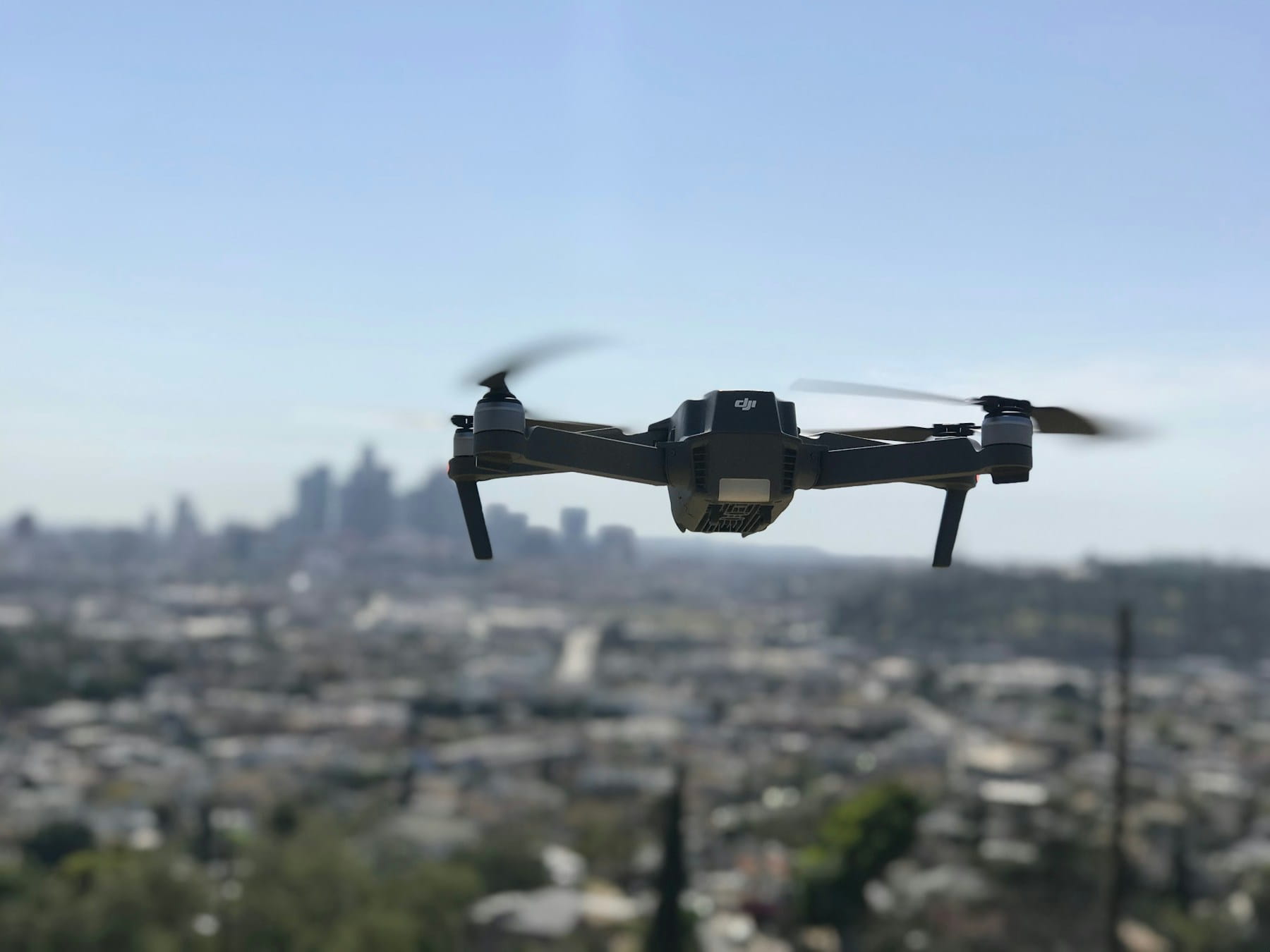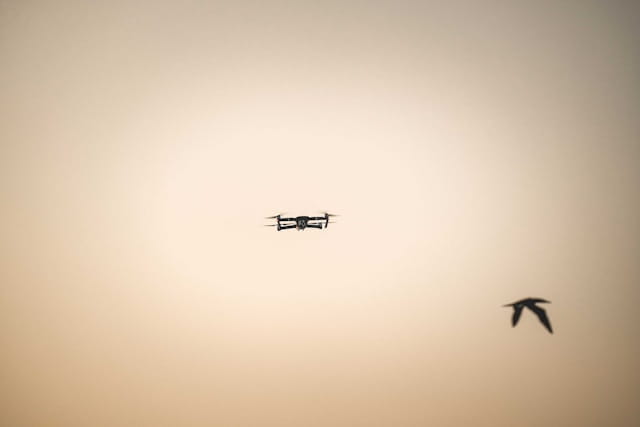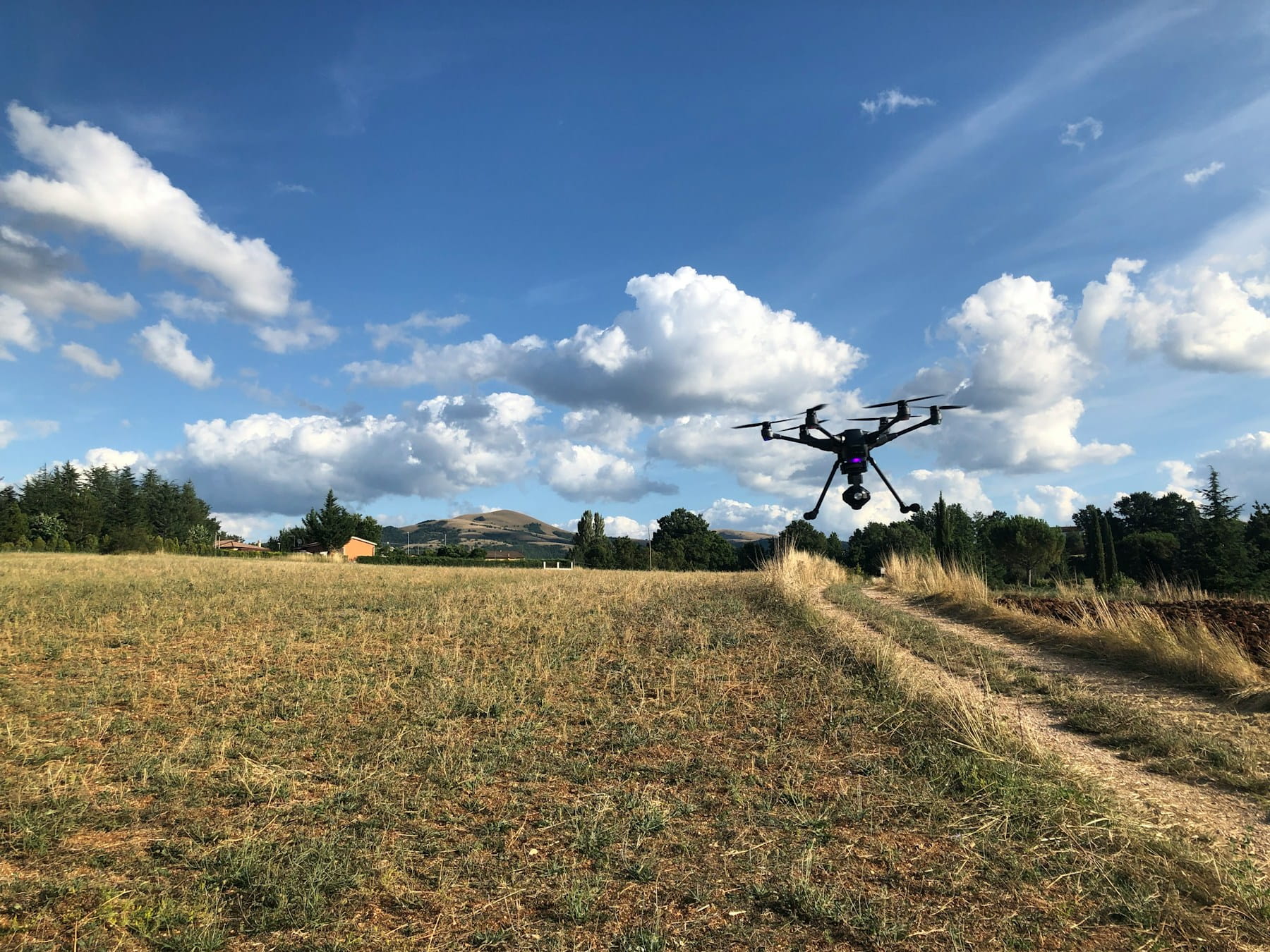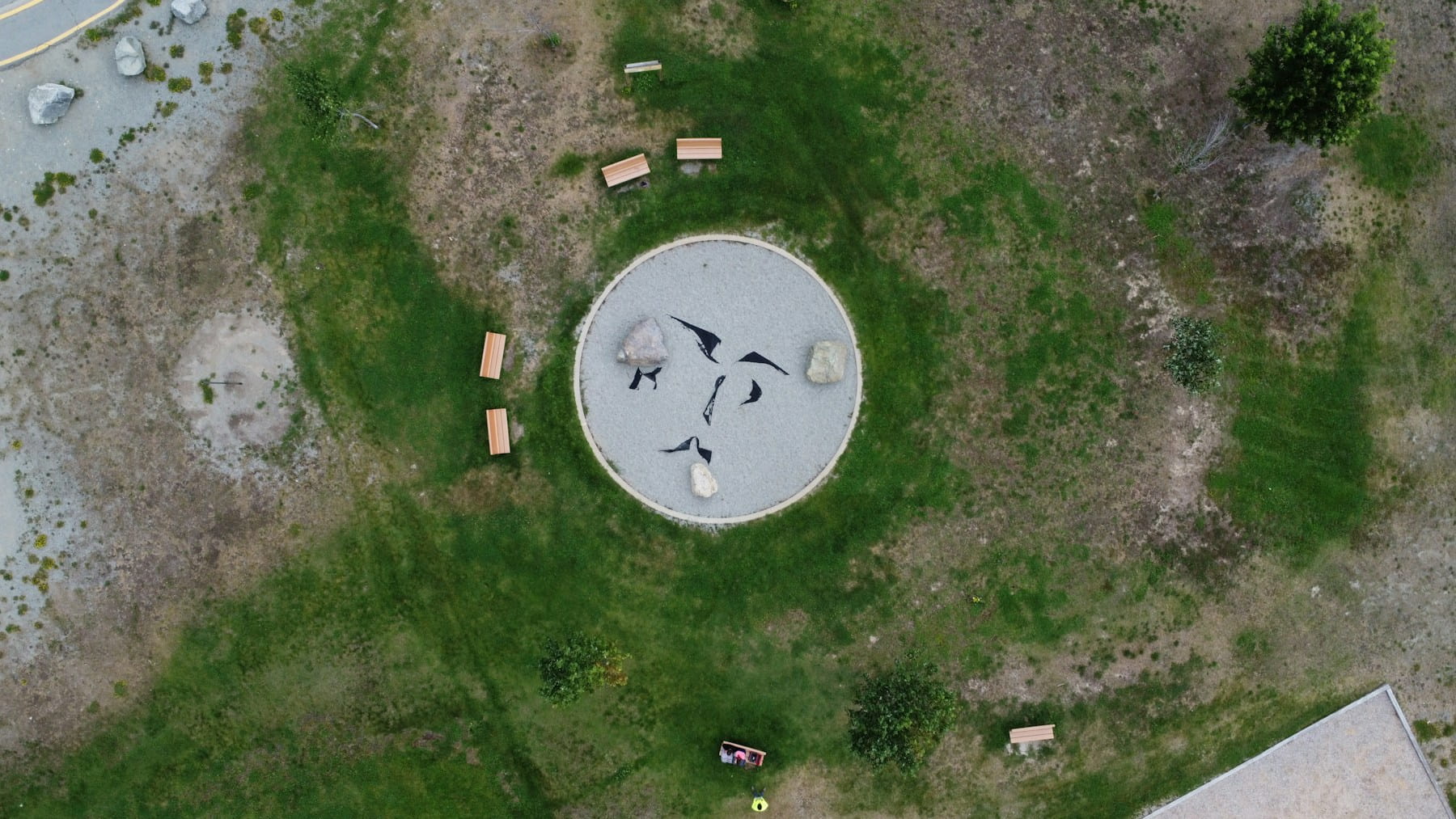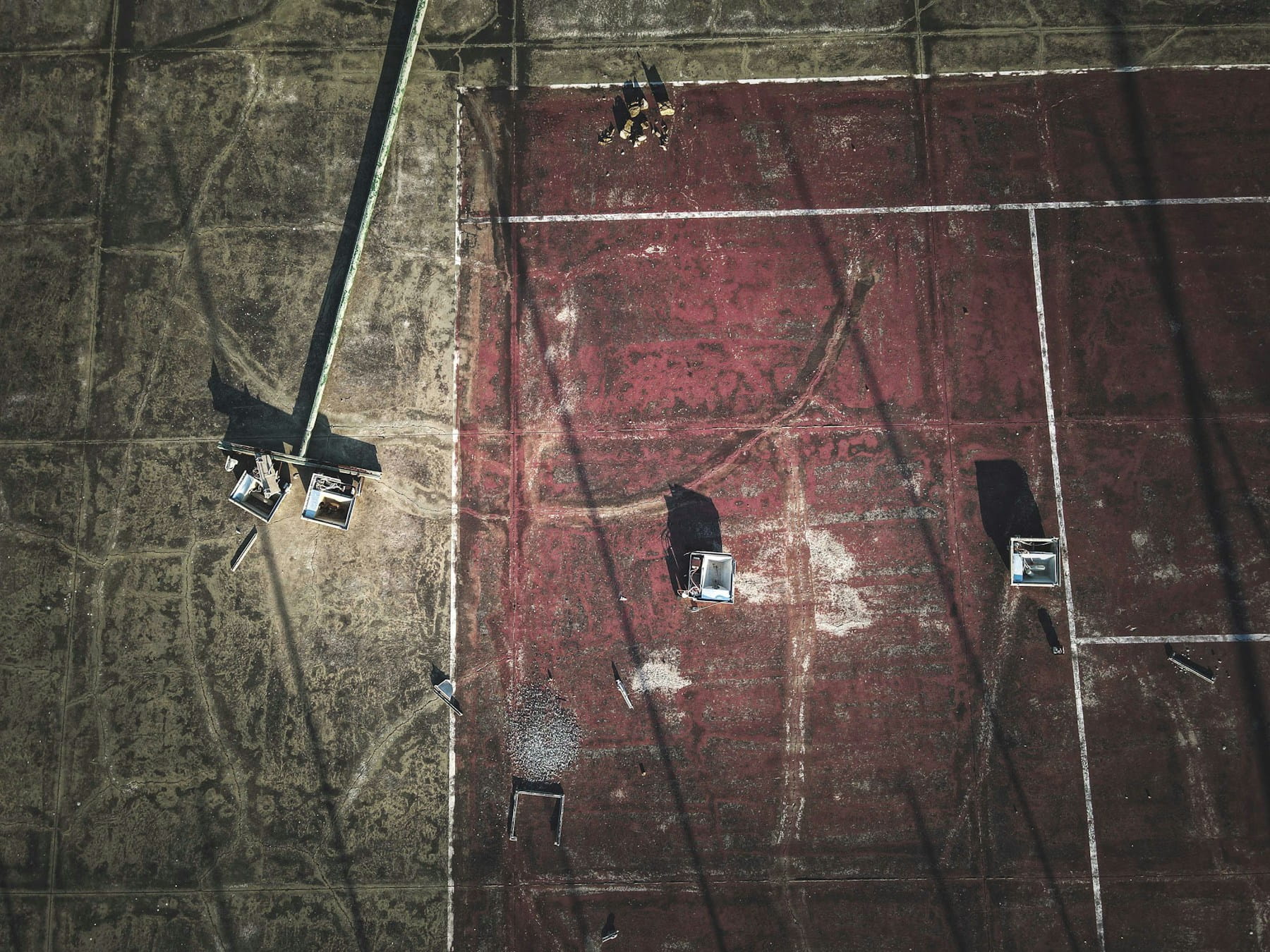What is the Future of Drone Technology?
The future of drone technology encompasses rapidly evolving autonomous systems, expanded beyond-visual-line-of-sight operations, and advanced AI capabilities enabling sophisticated applications across law enforcement, healthcare delivery, industrial inspection, and infrastructure management. These developments, supported by progressive regulatory frameworks and decreasing costs, are transforming drones from experimental tools into essential operational assets delivering measurable efficiency, safety, and economic benefits across multiple industries.
Unmanned aerial vehicles have evolved from military tools and hobbyist gadgets into sophisticated machines capable of revolutionizing entire industries. What started as remote-controlled toys has become a multi-billion-dollar technology ecosystem reshaping emergency response, package delivery, industrial inspection, and precision agriculture.
The global drone market reached $41.79 billion in 2025 and is projected to climb to $89.70 billion by 2030, reflecting robust 13.9% annual growth. The autonomous drone segment shows even stronger expansion at 21.7% annually as AI-powered systems become viable for complex missions.
This transformation is unfolding now. Police departments across America are deploying autonomous drone fleets. Medical supply chains use aerial delivery systems. Construction sites employ UAVs for safety inspections that once required scaffolding and considerable risk. Regulatory frameworks continue adapting, artificial intelligence capabilities expand, and manufacturing costs decline.
Table of contents
- Law enforcement drone operations expand nationwide
- Delivery systems face regulatory breakthrough
- Medical supply transport revolutionizes healthcare
- Manufacturing supply chains shift to domestic production
- Agricultural applications transform farming practices
- Industrial inspection capabilities expand
- Entertainment and media production evolves
- Humanitarian operations benefit from UAV technology
- Challenges and considerations
- Frequently asked questions
- Implementation considerations
- In summary
Law enforcement drone operations expand nationwide
More than 1,500 police departments across the United States now operate drone programs. That number represents a massive shift from just five years ago when such technology was largely experimental. The Federal Aviation Administration has granted beyond-visual-line-of-sight waivers to hundreds of agencies since 2019, with over 190 BVLOS waivers issued by October 2024, fundamentally changing how law enforcement can deploy these systems.
Autonomous drones capable of independent takeoff, flight, and landing operations now operate up to three miles from docking stations at speeds of 57 miles per hour. Applications range from suspect tracking to providing aerial support for officers during traffic stops while backup arrives.
Police departments are connecting these aerial systems with existing surveillance infrastructure—license plate readers, security cameras, and real-time crime centers. This creates comprehensive monitoring networks that can track situations across entire cities.
Privacy advocates have raised concerns about this expansion. The American Civil Liberties Union warns that widespread drone deployment could create environments where citizens feel constantly monitored. The Chula Vista Police Department in California faced community criticism about transparency regarding footage collection and usage after receiving the first BVLOS waiver in 2019.
The expansion continues despite these concerns. Police departments argue that drones provide faster response times, better situational awareness, and improved officer safety. The technology allows rapid deployment to crime scenes, search and rescue operations, and crowd monitoring during large events, all managed through comprehensive operations software.
Delivery systems face regulatory breakthrough
Package delivery by drone has been promised for over a decade, but regulatory hurdles have kept it largely confined to small pilot programs. That's changing as the FAA begins approving beyond-visual-line-of-sight operations for commercial delivery services. The FAA proposed new Part 108 regulations in August 2025 to normalize routine BVLOS operations for commercial and public safety purposes.
Amazon's Prime Air program represents the most high-profile example of this regulatory shift. After years of developing collision-avoidance systems and demonstrating safe operations alongside helicopters, planes, and hot air balloons, Amazon received FAA approval to expand operations in Texas. The company spent considerable resources creating onboard systems that enable drones to detect nearby objects and avoid collisions without human pilot oversight.
Google's Wing Aviation and Zipline received similar approvals, with the FAA allowing these companies to operate simultaneously in shared airspace without visual observers. This represents a fundamental shift in how aviation authorities view commercial drone operations.
The technology behind these systems is sophisticated. Modern delivery drones use multiple sensors, GPS systems, and artificial intelligence to plan routes, avoid obstacles, and execute precise deliveries. Battery technology improvements have extended flight times, while payload capabilities have increased to handle packages weighing several pounds.
Weather resistance has also improved significantly. Current-generation delivery drones can operate in light rain, moderate winds, and varying temperatures—conditions that would have grounded earlier systems. This expanded operational envelope, coupled with weather monitoring capabilities, makes commercial delivery services more viable for consistent service.
The economic implications are substantial. Delivery drones could reduce last-mile delivery costs, particularly in rural areas where traditional delivery methods are expensive. They also offer environmental benefits by reducing the number of delivery trucks on roads, potentially lowering emissions and traffic congestion.
Medical supply transport revolutionizes healthcare
Healthcare applications represent perhaps the most compelling use case for drone delivery technology. Medical supplies, vaccines, blood products, and laboratory specimens all benefit from rapid, direct transport that drones provide.
Organ transplant procedures exemplify the time-critical nature of medical drone applications. Before organs can be transplanted, multiple blood tests must travel between facilities to ensure compatibility. These tests often require rapid transport that ground vehicles or helicopters can't provide efficiently. Drone systems could significantly reduce the time between testing and transplant procedures.
Remote areas particularly benefit from medical drone delivery. Rural hospitals and clinics often struggle with supply chain logistics, especially for time-sensitive materials like vaccines or antivenom. Drones can reach locations that road networks don't serve effectively, potentially saving lives in emergency situations.
Blood bank operations represent another promising application. Blood products have strict storage requirements and limited shelf lives, making rapid transport essential. Drones equipped with temperature-controlled storage systems can maintain proper conditions while delivering these critical supplies faster than traditional methods.
Emergency medical response scenarios also benefit from drone technology. First responders can deploy drones carrying automated external defibrillators, emergency medications, or communication equipment to accident scenes before ambulances arrive. This capability could prove life-saving in situations where every minute counts.
International humanitarian organizations have already demonstrated the effectiveness of medical supply drones in disaster zones and conflict areas. These operations provide valuable real-world data about system reliability, operational procedures, and regulatory frameworks that will inform broader deployment.
Manufacturing supply chains shift to domestic production
The American Security Drone Act, signed into law as part of the National Defense Authorization Act in December 2023, prohibits federal agencies from purchasing drones from countries considered security threats, including Russia and China. This legislation represents a seismic shift for an industry where Chinese manufacturers, particularly DJI, control over 90% of the law enforcement drone market.
China dominates global drone manufacturing, producing both complete systems and individual components. The new legislation aims to reduce American dependence on foreign drone technology for government and defense applications.
The Defense Department's Blue UAS Cleared List identifies approved drones and components for federal purchase. This list applies to federal agencies and state and local organizations receiving federal funding, significantly expanding its impact on the overall market.
American drone manufacturers are racing to meet this new demand. Companies are developing components specifically designed to meet Blue List requirements, including flight controllers, sensor systems, and other critical components for domestic markets.
Private sector purchases will likely remain dominated by Chinese manufacturers in the short term. Hobbyists, videographers, and commercial operators without government contracts will continue purchasing DJI and other foreign-made systems due to their competitive pricing and established performance records.
The long-term implications could reshape global drone manufacturing. American companies may develop competitive alternatives to Chinese systems, potentially reducing costs through economy of scale. However, this transition period may see higher prices and reduced availability as domestic production capacity expands.
Agricultural applications transform farming practices
Modern agriculture increasingly relies on precision farming techniques that optimize resource usage while maximizing crop yields. Agricultural drones equipped with advanced sensors play a central role in this transformation, providing farmers with detailed information about crop health, pest infestations, and irrigation needs.
Multispectral and hyperspectral cameras mounted on agricultural drones can detect plant stress, disease, and nutrient deficiencies long before they become visible to human observers. This early detection capability allows farmers to address problems quickly, potentially preventing significant crop losses.
Pest management represents a particularly promising application for agricultural drones. Japanese researchers have developed systems that use infrared cameras to detect insect infestations and deploy targeted pesticide applications. Some experimental systems even include mechanical pest removal capabilities, reducing chemical pesticide usage.
Variable-rate application technology allows drones to deliver precisely measured amounts of fertilizers, pesticides, and water to specific areas of fields. This targeted approach reduces input costs while minimizing environmental impact from excess chemical applications.
Livestock monitoring has also benefited from drone technology. Ranchers use drones to monitor cattle herds across vast grazing areas, checking for injured or missing animals without the time and expense of ground-based searches. Thermal imaging capabilities make these operations effective even in challenging weather conditions.
Crop monitoring throughout growing seasons provides valuable data for harvest planning and yield predictions. Farmers can identify areas of fields that may be ready for harvest earlier or later than others, optimizing equipment usage and labor scheduling.
The integration of artificial intelligence with agricultural drone data creates powerful analytical capabilities. Machine learning algorithms can analyze crop imagery to predict yields, identify optimal planting patterns, and recommend treatment protocols based on historical data and current conditions.
Industrial inspection capabilities expand
Infrastructure inspection represents one of the most immediate and practical applications for commercial drone technology. Traditional inspection methods for buildings, bridges, power lines, and industrial facilities often require expensive equipment like scaffolding, cranes, or rope access teams.
Construction companies and engineering firms have rapidly adopted drone inspection capabilities for building envelope assessments. These systems can identify structural defects, heat leakage, corrosion, and other issues while significantly reducing inspection time and costs. The aerial perspective also reveals problems that ground-based inspections might miss.
Oil and gas facilities present particularly challenging inspection environments due to safety hazards and access difficulties. Workers in these industries face accident rates three times higher than other sectors, making drone inspections an attractive safety improvement. Drones can inspect refinery equipment, pipelines, and storage tanks without exposing personnel to dangerous conditions.
Power transmission lines cover vast distances across varied terrain, making traditional inspection methods time-consuming and expensive. Utility companies use drones equipped with high-resolution cameras and thermal sensors to identify equipment problems, vegetation encroachment, and structural damage along transmission corridors.
Wind turbine inspections have been revolutionized by drone technology. These massive structures require detailed blade inspections to identify cracks, erosion, and other damage that could lead to catastrophic failures. Drones can perform these inspections safely and thoroughly while turbines remain operational.
Bridge and infrastructure inspections benefit from drone capabilities to access areas that are difficult or dangerous for human inspectors. Drones for surveying can examine bridge undersides, tall structures, and unstable surfaces while providing high-resolution imagery for detailed analysis.
The data collection capabilities of modern inspection drones extend beyond simple photography. LiDAR sensors create detailed 3D models of structures, while thermal imaging reveals heat signatures that indicate electrical problems or insulation failures. This comprehensive data collection enables more thorough and accurate condition assessments.
Entertainment and media production evolves
The entertainment industry has embraced drone technology for aerial cinematography, creating new artistic possibilities while reducing production costs. Traditional aerial filming required expensive helicopters and specialized camera equipment, limiting these techniques to high-budget productions.
Modern cinema drones carry high-resolution cameras capable of producing professional-quality footage. Stabilization systems ensure smooth video even in challenging weather conditions, while intelligent flight modes enable complex camera movements that would be difficult to achieve with traditional methods.
Real estate marketing has been transformed by drone videography. Property listings now routinely include aerial footage that showcases neighborhoods, landscapes, and building exteriors from perspectives impossible with ground-based photography. This enhanced marketing material helps properties sell faster and for higher prices.
Event photography and videography benefit from drone capabilities to capture unique perspectives of weddings, concerts, sporting events, and corporate gatherings. The ability to film from directly overhead or at varying heights adds visual interest and production value to these recordings.
Live streaming capabilities enable drones to provide real-time coverage of news events, natural disasters, and breaking news situations. News organizations use drones to access areas that may be dangerous or inaccessible for human camera crews while providing viewers with immediate visual information.
Sports broadcasting has incorporated drone technology to enhance viewer experience during competitions. Aerial footage of ski slopes, golf courses, and marathon routes provides perspectives that traditional cameras cannot achieve, while following athletes through challenging terrain.
The democratization of aerial filming has enabled independent filmmakers and content creators to produce professional-quality work on limited budgets. Social media platforms showcase drone footage from around the world, inspiring creative applications and driving further adoption of the technology.
Humanitarian operations benefit from UAV technology
Disaster response and humanitarian aid operations increasingly rely on drone technology to assess damage, locate survivors, and deliver critical supplies to affected areas. These applications often operate in challenging conditions where traditional aircraft cannot safely fly.
Search and rescue operations use drones equipped with thermal cameras to locate missing persons in wilderness areas, collapsed buildings, or disaster zones. These systems can cover large areas quickly while identifying heat signatures that indicate survivors requiring assistance.
Damage assessment following natural disasters helps emergency management agencies allocate resources effectively. Drones can survey affected areas immediately after storms, earthquakes, or floods, providing real-time information about infrastructure damage and areas requiring priority attention.
Refugee camp monitoring and security represent sensitive but important applications for humanitarian drones. These systems can provide perimeter security, monitor camp conditions, and assist with logistics operations while maintaining appropriate privacy protections for displaced populations.
Water and food distribution in remote areas benefits from drone delivery capabilities. Organizations operating in conflict zones or areas with damaged infrastructure can use drones to deliver supplies to populations that ground transportation cannot reach safely.
Environmental monitoring following disasters helps assess long-term impacts and recovery needs. Drones can monitor water quality, vegetation recovery, and wildlife impacts over extended periods, providing valuable data for restoration planning.
International coordination of humanitarian drone operations requires careful planning to avoid conflicts with military aircraft or other emergency response systems. Standardized protocols and communication systems help ensure safe and effective operations across multiple organizations and countries.
Challenges and considerations
The rapid advancement of drone technology brings significant challenges that society must address. Privacy concerns top the list, particularly as autonomous systems become capable of extended operations without direct human oversight.
Airspace management becomes increasingly complex as drone operations expand. Traditional air traffic control systems were designed for human-piloted aircraft following predictable flight paths. Autonomous drones operating at low altitudes create new coordination challenges for aviation authorities.
Cybersecurity threats pose risks to drone operations, particularly for systems controlling critical infrastructure or carrying sensitive cargo. Malicious actors could potentially hijack drone systems, access collected data, or disrupt operations through electronic warfare techniques.
Public acceptance varies significantly depending on the application and local context. While people generally support drone usage for emergency response and medical deliveries, surveillance applications face more skepticism and resistance from privacy advocates and civil liberties organizations.
Technical limitations still constrain drone operations in many situations. Battery life, payload capacity, weather sensitivity, and sensor limitations affect system performance and reliability. Continued technological development is required to address these constraints.
Regulatory frameworks struggle to keep pace with technological advancement. Aviation authorities, privacy regulators, and law enforcement agencies must balance innovation with safety and privacy protection while avoiding overly restrictive rules that stifle beneficial applications.
Workforce impacts require consideration as drone technology automates tasks previously performed by human workers. Delivery drivers, security guards, inspection technicians, and agricultural workers may face job displacement as drone systems become more capable and cost-effective.
Frequently asked questions
What are the most significant drone technology developments in 2025?
The most significant developments include expanded BVLOS operations with over 190 FAA waivers granted by October 2024, the American Security Drone Act redirecting federal procurement to domestic manufacturers, and the proposed Part 108 regulations normalizing commercial drone operations. The autonomous drone market is growing at 21.7% annually, with AI-powered systems becoming viable for complex missions across construction, energy, and agriculture sectors.
How are regulatory changes enabling commercial drone operations?
The FAA's proposed Part 108 regulations and increasing BVLOS waivers are enabling routine commercial operations without visual observers. These regulatory changes allow delivery services, law enforcement, and industrial inspection applications to operate at scale. The Elk Grove Police Department received the largest law enforcement BVLOS waiver in 2025, covering 42 square miles at altitudes up to 400 feet.
Which industries are adopting drone technology most rapidly?
Agriculture, construction, infrastructure inspection, and emergency services show the fastest adoption rates. The global drone market reached $41.79 billion in 2025 and is projected to reach $89.70 billion by 2030. Law enforcement agencies have deployed over 1,500 drone programs nationwide, while utility companies increasingly use drones for power line and wind turbine inspections.
What impact will the American Security Drone Act have on the drone industry?
The Act prohibits federal agencies and federally-funded organizations from purchasing drones from China, Russia, and other countries designated as security threats. This affects over 90% of the current law enforcement drone market dominated by DJI. The legislation drives investment in domestic drone manufacturing, though the transition period may see higher prices and reduced availability as American production capacity expands. Private sector purchases remain unaffected by the federal restrictions.
Implementation considerations
Organizations planning to integrate drone technology should start by identifying specific operational challenges that drones can address effectively. Law enforcement agencies should evaluate BVLOS waiver requirements and privacy policy frameworks before deployment. Commercial operators need to assess whether current Part 107 operations suffice or if upcoming Part 108 regulations will enable new business models.
Procurement decisions made after December 2023 must consider American Security Drone Act compliance for any operations receiving federal funding. Organizations should evaluate the Defense Department's Blue UAS Cleared List when selecting hardware and ensure chosen platforms can integrate with existing operational workflows and regulatory reporting requirements.
Pilot training and certification requirements vary significantly based on intended operations. Beyond-visual-line-of-sight operations require additional waivers and approvals beyond standard Part 107 certification. Organizations should allocate 3-6 months for the BVLOS waiver application process and ensure adequate pilot training programs before deploying autonomous systems.
In summary
Drone technology has transitioned from experimental applications to operational reality across law enforcement, delivery services, healthcare, agriculture, industrial inspection, and humanitarian operations. The regulatory environment continues evolving to enable expanded capabilities, with BVLOS waivers and proposed Part 108 regulations normalizing commercial operations that were impossible just a few years ago.
The American Security Drone Act represents a fundamental shift in drone manufacturing, redirecting federal procurement toward domestic suppliers and potentially reshaping global supply chains. While this transition creates short-term challenges for organizations dependent on Chinese-manufactured systems, it also drives investment in American drone technology that may yield long-term competitive advantages.
Market growth projections demonstrating 13.9% annual expansion reflect widespread industry adoption and measurable operational benefits. The autonomous drone segment shows particularly strong 21.7% annual growth as AI-powered systems deliver value across construction, energy, and precision agriculture applications. Organizations that thoughtfully integrate these capabilities while addressing privacy, safety, and regulatory requirements position themselves to benefit from this technological transformation.
Ready to manage your drone operations professionally?
DroneBundle provides comprehensive operations management tools designed for commercial drone service providers navigating the evolving regulatory landscape. The platform streamlines flight planning, maintains compliance documentation, and coordinates multi-aircraft operations as your organization scales.
Track regulatory changes systematically, manage pilot certifications, maintain detailed flight records, and coordinate equipment maintenance schedules through integrated workflows. DroneBundle's platform supports organizations preparing for BVLOS operations and ensures operational records satisfy current and proposed regulatory requirements.
Start your free trial today — no credit card required.
Or book a demo to see how DroneBundle manages complex drone operations with integrated compliance tracking and operational coordination.
